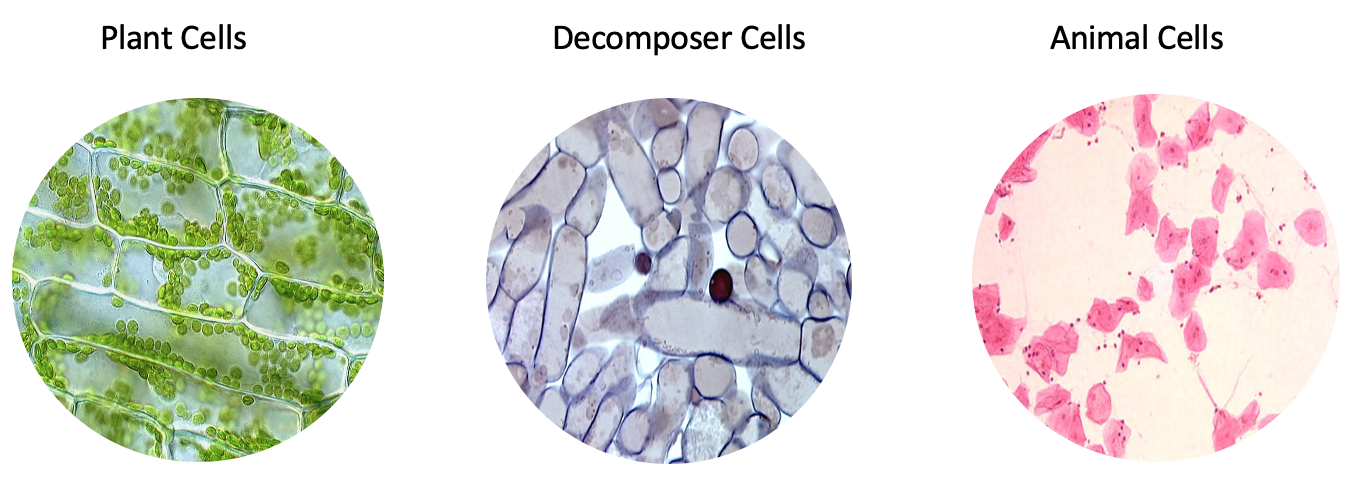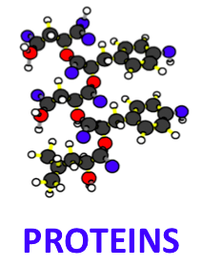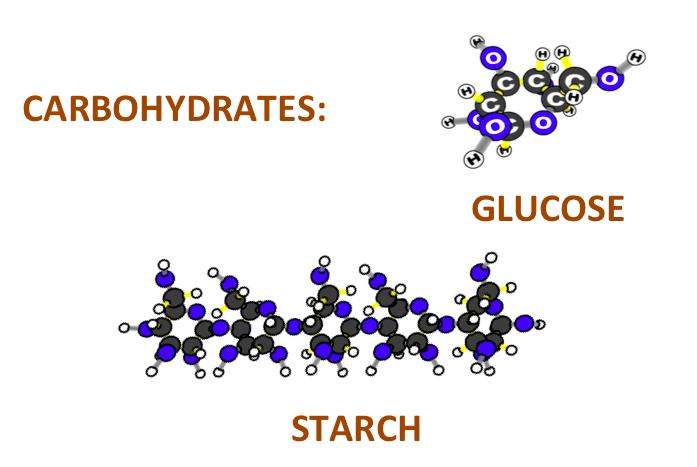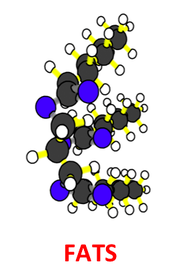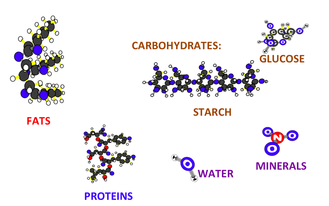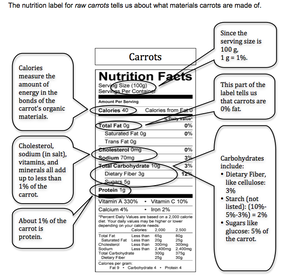FACT: All living things are made of cell(s)
We know that all living things are made of cells because we can see the cells under a microscope. Before the microscope was invented people didn't know that there were cells or that there were microorganisms such has bacteria. Plant cells normally have strong walls and are more square/rectangular in shape. Animal cells don't have a cell wall and so
We know that all living things are made of cells because we can see the cells under a microscope. Before the microscope was invented people didn't know that there were cells or that there were microorganisms such has bacteria. Plant cells normally have strong walls and are more square/rectangular in shape. Animal cells don't have a cell wall and so
FACT: All cells are made of molecules
The main molecules in cells are proteins, carbohydrates, and fats. Fats make up cell membranes. Carbohydrates make up cell structures and can be broken down to release energy. Proteins are the doing molecules in cells. Proteins build other molecules, transport substances into and out of the cell, and communicate with other cells.
The main molecules in cells are proteins, carbohydrates, and fats. Fats make up cell membranes. Carbohydrates make up cell structures and can be broken down to release energy. Proteins are the doing molecules in cells. Proteins build other molecules, transport substances into and out of the cell, and communicate with other cells.
Images from: http://carbontime.bscs.org
FACT: All molecules are made of atoms
|
Images from: http://carbontime.bscs.org
|
Organic molecules such as Fats, Proteins, and Carbohydrates all contain CARBON, OXYGEN, and HYDROGEN atoms. Proteins also contain atoms of nitrogen. These molecules can burn as they contain high energy C-C or C-H bonds.
Cells also contain molecules of minerals and water. These molecules have atoms of nitrogen, oxygen, hydrogen, and phosphorus. As these molecules do not contain high energy C-C or C-H bonds they cannot be used for energy by the cell. |
FACT: Food can be used to build more cells, or it can be broken down to release the energy found in the bonds of the food molecules
|
The food we eat comes from living things. Food is organic, which means it has high energy bonds and can burn. When your body uses food for energy it breaks the high energy bonds in the food, releasing the energy. We also eat food in order to grow. The food we eat contains the molecules that are needed to make more cells.
When you buy food at the store it comes with a nutrition label. This label tells you what kind of molecules are found in the food and how much energy is stored in the bonds of the molecules. Calories - measure energy Molecules that contain energy are CARBOHYDRATES, PROTEINS, and FATS. Fats include saturated and unsaturated fat as well as cholesterol. Carbohydrates include sugar, fiber, and starch. Non-energy molecules are vitamins, minerals, and water. |
|
Images from: http://carbontime.bscs.org
How do cells use food for energy: Cellular Respiration
What do we get from air?
With every breath, your lungs fill up with air, but you don’t breathe out all of the oxygen you took in. What happens to the oxygen that you breathe in? Lungs have tiny spaces where the air goes, and each space is surrounded by tiny blood vessels. Some of the oxygen you breathe in goes into these blood vessels. The blood then takes oxygen to cells all over your body.
What do we get from food?
You’ve already learned that we get organic matter from the foods we eat. These are carbohydrates, proteins, and fats. This organic matter is digested and broken down to monomers and taken to cells by the blood. Sometimes cells rebuild the monomers back into polymers in order to grow. But most monomers are used by cells in a different way: they are “reacted” with oxygen in the cells. What happens when organic matter is reacted with oxygen? Do you have any ideas?
How do we get energy from food?
Every cell in your body needs energy, but how does it get energy? At first the energy is stored in food molecules as chemical energy. The food molecules have carbon-carbon and carbon- hydrogen bonds. The cell can change this chemical energy into other forms of energy, such as kinetic energy, more chemical energy, or heat. The cell does this by reacting food molecules with oxygen and changing the organic food matter into waste products it doesn’t need: carbon dioxide and water. How can it get rid of the waste products? Give them back to the blood! And the blood takes these waste products back to the lungs so you can breathe them out and get rid of them.
With every breath, your lungs fill up with air, but you don’t breathe out all of the oxygen you took in. What happens to the oxygen that you breathe in? Lungs have tiny spaces where the air goes, and each space is surrounded by tiny blood vessels. Some of the oxygen you breathe in goes into these blood vessels. The blood then takes oxygen to cells all over your body.
What do we get from food?
You’ve already learned that we get organic matter from the foods we eat. These are carbohydrates, proteins, and fats. This organic matter is digested and broken down to monomers and taken to cells by the blood. Sometimes cells rebuild the monomers back into polymers in order to grow. But most monomers are used by cells in a different way: they are “reacted” with oxygen in the cells. What happens when organic matter is reacted with oxygen? Do you have any ideas?
How do we get energy from food?
Every cell in your body needs energy, but how does it get energy? At first the energy is stored in food molecules as chemical energy. The food molecules have carbon-carbon and carbon- hydrogen bonds. The cell can change this chemical energy into other forms of energy, such as kinetic energy, more chemical energy, or heat. The cell does this by reacting food molecules with oxygen and changing the organic food matter into waste products it doesn’t need: carbon dioxide and water. How can it get rid of the waste products? Give them back to the blood! And the blood takes these waste products back to the lungs so you can breathe them out and get rid of them.
Images from: http://carbontime.bscs.org
Evidence of Cellular Respiration
We Breathe Out CO2 and H2O: As cells work, they give off carbon dioxide and water that they do not need. Carbon dioxide and water are inorganic molecules that do not have chemical energy. These molecules leave the cells and go back into the blood vessels. Eventually the H2O and CO2 leave our bodies. Carbon dioxide leaves when we breathe out. Water leaves when we breathe and sweat and urinate. What ways could you measure the H2O and CO2 animals give off when they breathe?
We Give Off Heat: Just like when you burn a piece of wood, burning food in your body also changes chemical energy to heat. Animal cells do this during cellular respiration. In fact, the heat you get from the food you eat is the same amount of heat that would be given off if you burned the food in a pan on the stove! A scientist name Max Rubner proved this to be true over 100 years ago. He found that burning dog food released the same amount of energy as was released if the dog ate and metabolized the food! The heat created when our cells do cellular respiration helps our body maintain its 98.6° temperature in warm and cold weather.
Our “Energy Level” Changes With Food: If animals do not get enough food and chemical energy they get tired. But when animals eat, they feel “energized.” That’s why athletes eat certain foods before a big race. Our bodies react the food with oxygen, changing the chemical energy in food into motion energy we use to move around and be active.
We Give Off Heat: Just like when you burn a piece of wood, burning food in your body also changes chemical energy to heat. Animal cells do this during cellular respiration. In fact, the heat you get from the food you eat is the same amount of heat that would be given off if you burned the food in a pan on the stove! A scientist name Max Rubner proved this to be true over 100 years ago. He found that burning dog food released the same amount of energy as was released if the dog ate and metabolized the food! The heat created when our cells do cellular respiration helps our body maintain its 98.6° temperature in warm and cold weather.
Our “Energy Level” Changes With Food: If animals do not get enough food and chemical energy they get tired. But when animals eat, they feel “energized.” That’s why athletes eat certain foods before a big race. Our bodies react the food with oxygen, changing the chemical energy in food into motion energy we use to move around and be active.
Energy in ATP
Text and images from Carbon Time.
Proudly powered by Weebly
